The best way to teach kids about anything, especially something as complicated (and potentially boring) as finance, is to make it relatable, fun, and engaging. Last week, we talked about how to make learning the basics of financial literacy more fun through gameplay. This week, we are going to get into another fun way to teach kids about managing money—by sitting down with a good book.
Here are 8 books that can teach kids valuable lessons about saving and spending:
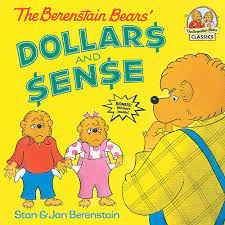
The Berenstain Bears’ The Trouble with Money and Dollars and Sense, by Stan and Jan Berenstain. In this classic book series, there are a lot of valuable lessons to learn—from how to deal with bullies to how to be brave in the dark. In The Trouble with Money, Mama and Papa are worried that Brother and Sister seem to think money grows on trees. The cubs decide to earn some bucks by walking dogs and opening a lemonade stand. In Dollars and Sense, the cubs learn to manage their allowance using checks and checkbooks. The book even comes with tear-out pretend checks so your kids can practice budgeting the way the cubs did.
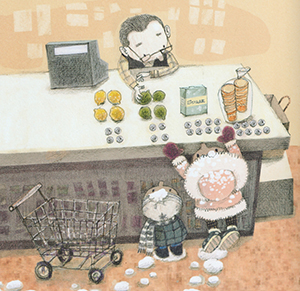
Lemonade in Winter by Emily Jenkins. This picture book is about Pauline and John-John who decide to set up a lemonade stand in the middle of winter. The book introduces simple math concepts as Pauline and John-John learn about profits, expenses, and counting money as they try to make a profit despite the cold weather. This book is perfect for children aged 4 to 8 and can be a great way to introduce them to basic financial concepts.
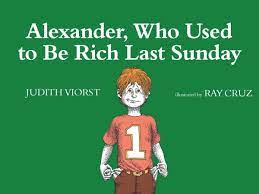
Alexander, Who Used to Be Rich Last Sunday, by Judith Viorst, If you were a kid at some point in the last 40 years, you are likely familiar with Alexander, the bad luck magnet from the popular children’s book Alexander and the Terrible, Horrible, No Good, Very Bad Day. In this follow-up book, Alexander’s grandparents give him some money and he begins to dream of the ways he can spend it. Sadly, his fortune begins to disappear before those dreams are realized. It’s a fun (and funny) way to look at the consequences of saving vs. spending.

A Chair for My Mother, by Vera B. Williams. In this Caldecott Honor book, little Rosa’s home is destroyed by a fire. So, she teams up with her mother and grandmother to save until they have enough money to buy a comfortable chair that they can all enjoy– the kind of chair Rosa’s mother deserves after being on her feet all day in the Blue Tile Diner. It’s a heartwarming story about the patience and perseverance it takes to save your money one shiny coin at a time.
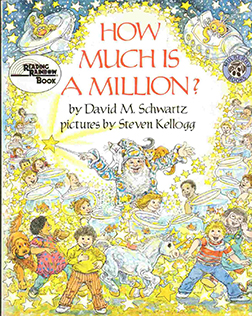
How Much is a Million and If You Made a Million by David M. Schwartz. In How Much is a Million, Marvelosissimo the Mathematical Magician, works his magic to help young readers visualize how much a million (and then a billion and a trillion) really is. For example, he waves his wand to create a goldfish bowl for a million goldfish—and it is large enough for a whale. In the award-winning sequel, Marvelosissimo is your expert guide as you learn about the various forms of money and how it can be used to buy things, pay off debt, and build interest. In an easily understandable way, the team discovers the relative value of various denominations and how accomplishing tasks and earning payment go hand-in-hand. The book also touches on concepts like saving and spending, accruing interest, writing checks, and even financing a mortgage.
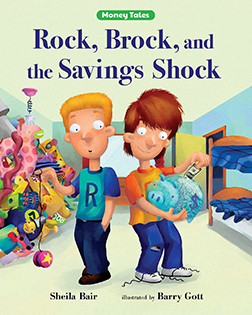
Rock, Brock and the Savings Shock by Sheila Bair. If you love a good rhyming book, take a spin through this (Money Tales series) book about twin brothers Rock and Brock. As they earn money doing chores, their grandfather offers to match dollar-for-dollar whatever they save. In the end, one twin ends up with $512, and one twin has none. The book is a great introduction to the benefits of saving your money. There are even notes in the back that offer explanations about banking and compound interest.
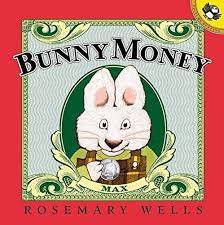
Bunny Money, by Rosemary Wells. In this book from the classic Max and Ruby series, Ruby has saved her money to buy her grandmother a present, but quickly learns how easy it is to spend her savings. The book does an excellent job of showing how hard it can be to manage your money (even after you have saved up). It’s a great bookshelf addition for kids aged 3 to 5 who need to learn about impulse purchases and the value of sticking to a shopping list.
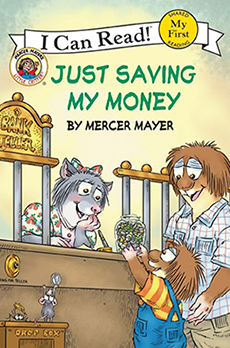
Little Critter: Just Saving My Money by Mercer Mayer. In this book, another longtime classic character, Little Critter desperately wants a skateboard. So, his father tells him he needs to save his money to buy one. Little Critter does chores and little jobs to make and save money but soon learns that saving is sometimes harder than it seems. The book provides a great platform for kids to discuss the things they want to save up for so that parents and guardians can help them create a plan to reach their goals.
Teaching children about financial literacy from an early age is essential for their future financial well-being. Using children’s books that teach financial literacy is an effective way to introduce children to basic financial concepts in a fun and engaging way. By reading these books, children can learn about saving, budgeting, and investing and develop good financial habits that will serve them well throughout their lives. If you don’t want to purchase these books, consider taking a trip to the local library and looking for these and other titles that might interest your little saver (a librarian can help).
